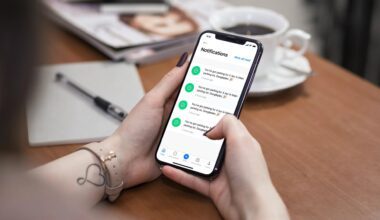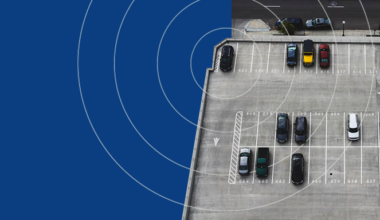The last year has seen an explosion in remote work software and workspace scheduling solutions and apps. Companies all over the world are embracing technologies which help save time and boost productivity like never before.
With 58.25% of companies planning to continue with a hybrid setup (combination of remote and in-office work) even after the pandemic, many are investing in these tools for the long-term.
It’s amazing how technology has evolved throughout the years to help us meet our changing needs.
Now, as companies start to allow more employees to report back physically to the workplace, what are the challenges associated with the redefined normal, and what are the workspace scheduling solutions, technological tools and other methods that you can utilize?
How do you set up your workplace to promote social distancing?
The Centers for Disease Control and Prevention (CDC) recommends a safe distance of at least 6 feet or 2 meters between individuals. Requirements vary per country, so best to check with your respective federal, state or local government’s specific regulations.
To compute your office’s maximum human capacity with social distancing, you may use an occupany capacity calculator available online for free.
Once you’ve determined your occupancy limit, create a seating plan, mapping the particular workstations that can be used, ensuring that the spacing between them adheres to CDC’s recommendation or your governing body’s guidelines.
Workplace scheduling solutions such as Robin and Envoy have this floor mapping feature.
As policies and regulations are updated frequently, stay on top of changes and be ready to adjust accordingly.
What is the optimal seating arrangement for your office? Apart from being compliant to minimum health protocols, make sure that you and everyone in your organization feel safe and secure. Get regular feedback from your company leaders and employees and encourage open communication.
How do you designate and monitor employees’ schedule and shifting?
How many employees can report physically to the workplace, based on your seating plan? This is probably around 20 to 30 percent of your workforce.
To decide on who should be given priority, consider the work function of the person- does it require physical presence? If yes, how many hours / days in a week?
Employees with more operational or administrative scope may need to be at the office physically with greater frequency, compared to those in the marketing or accounting departments.
Consider also the following factors: What is the employee’s COVID-19 risk assessment? Does the employee live with younger kids or elderly individuals? How does the employee get to the office (private vehicle / public commute)?
In designing your company’s hybrid work model, your objective is to achieve a balance of productivity and convenience, structure and flexibility. It’s important to evaluate what works best for your organization: alternate work week (one group reports to the office for one week, and another group reports the next week), half-half (two to three days in the office, two to three days work from home), dividing the workforce between AM and PM shifts, compressed workweek, etc.
Many workspace scheduling solutions provide the following features: monitoring system on where each employee is on a certain day, desk and room reservation, hot desking, utilization metrics, workplace analytics, and integration with remote team management tools.
How to ensure safe travel?
Going back to work during this period, many employees feel safer driving their private vehicle to the office, rather than taking the public transport. This can cause potential problems, especially if parking spaces are limited or you lack a proper system.
These are the 6 most popular types of employee parking policy: first come, first served, designated spaces, mixed approach, flexible approach, employee parking credit, and paid employee parking.
With the ongoing COVID-19 pandemic, we recommend going with the flexible approach using a parking management system. How it works: one example is you can assign some slots as reserved parking, and others as first come, first served. With the hybrid work setup, there’s a possibility that slots designated to specific employees will not be used on certain days. These can then be automatically assigned to another person for the day.
This helps you maximize the use of resources such as parking slots, that the company is probably paying for, whether or not they are occupied for the day. You can even set a criteria on who will be prioritized for the use of the slots, or if the parking will be free or paid.
Wayleadr.com, the expert in parking management systems, can help you with anything parking-related. Since it is a mobile app, making reservations and checking of slot availability can be done in real time and while on the go, helping avoid bottlenecks due to parking space constraints.
Reducing congregation in common areas?
For office hallways and other common areas, it is best to adapt one-way routes to minimize human touchpoints. Set capacity limitations for each common room, such as the pantry, restrooms and conference rooms.
Flexible working hours can minimize the volume of employees queuing up for the elevator, coming in and going out at the same time.
Keep in mind that sharing meal time with others increases the risk of COVID-19 transmission, as masks are removed while eating and drinking. Some companies have even disallowed the use of dining halls and are encouraging employees to eat on their work desk to minimize risk of infection.
Housekeeping staff must be trained on how to use disinfectants approved for use against COVID-19 by the Environmental Protection Agency (EPA) or other appropriate agencies. Frequently-touched objects and surfaces, such as door knobs, elevator buttons, communal tables, keyboards, telephone handsets, must be sanitized before and after each use.
Thermal scanners, dispensers containing 70-75% alcohol solution, wet wipes, antibacterial hand soaps must be readily-available at convenient spots around the workplace.
Establish your company COVID-19 protocols
A workplace COVID-19 handbook, on top of existing safety protocols, is a great way to ensure that all employees are fully aware of their role in keeping themselves and others in the organization safe.
What are some safety practices that can be included?
- Go through an online health checklist upon waking up, using a Google Form. In case an employee experiences any COVID-19-related symptoms, he should not report to work and immediately inform the Human Resources (HR) Department, his direct manager or the company’s Safety Officer of his condition.
- Everyone should have his body temperature taken prior to entry to the workplace.
- In case an employee starts exhibiting flu-like symptoms while at the office, he should go to the Isolation Room (in case he is not well enough to travel home yet) or leave the company premises immediately.
- Wear a mask at all times, except when eating or drinking.
- Employee must not report to work and inform the appropriate party immediately, in case he tests positive for COVID-19 or he has been identified as the close contact of a positive case.
- The company should conduct close contact tracing should an employee test positive for COVID-19. Workspace scheduling solutions, such as Wayleadr.com can provide immediate and concrete data on when the employee was last physically present in the office, where he parked, the workspace he occupied, which are very helpful in ensuring the accuracy of the close contact tracing process.
Optimize your facility management operations
Find out how Wayleadr can help you manage facilities, assets, and resources more effectively
Get a Demo- Disallow face-to-face meetings and encourage employees to make sure of technological tools for virtual meetings and communication, such as Skype, Zoom, WhatsApp, etc.
- Prohibit discrimination related to COVID-19.
Visual reminders around the workplace and regular emails regarding company health protocols would be helpful in keeping everyone on the same page.
Regular and open social dialogue with employees can foster a cooperative environment where people will be more willing to comply with the company’s health and safety guidelines. Try to ask employees: What are the challenges and difficulties that they are experiencing with the current setup? Apart from physical health, don’t forget the importance of mental well-being during this time.
Using workspace scheduling solutions and technological tools to make processes more systematic and information more accessible can go a long way in minimizing stress and easing the transition to the hybrid work arrangement.
The ideal setup should improve productivity, boost employee morale and foster good collaboration.
Best of luck and stay healthy!
A robust parking management system is more important now than ever before- with the changing commuting landscape and high need for flexible workspace solutions as we go back to the workplace.
Join industry leaders from companies like Sanofi, Indeed.com & CBRE, schedule a demo with Wayleadr.com today and solve your parking problems in the click of a button.



